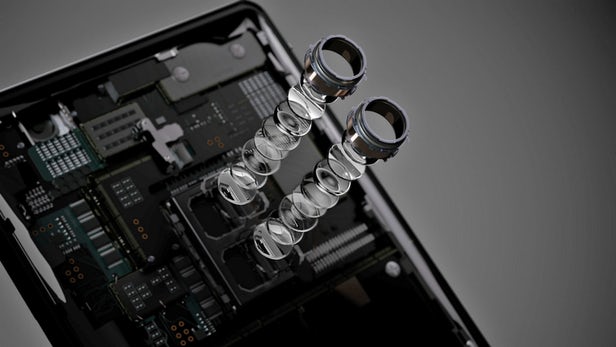Mobile photography set for major quality bump
The Sony Xperia XZ2 Premium offers a 13 MP rear camera, but Sony's new sensor would up that to 48 MP(Credit: Sony)
Author: David Nield
Smartphone camera sensors and lenses have to operate in a very tight space, but they continue to close the gap on full-size digital cameras year after year. Sony's new IMX586 sensor boasts a 48-megapixel resolution, the highest yet for a mobile sensor, and should be coming to a phone near you soon.
That increased resolution shrinks the pixel size down to 0.8 microns, which would usually lead to lower sensitivity and poor light collection. However, thanks to some smart technology called a Quad Bayer array – where neighboring pixels are intelligently combined – Sony says the effective pixel size is 1.6 microns.
The bigger the pixel size, the better the light capture and low-light performance. In comparison, the Google Pixel 2 – one of the best photo-taking phones on the market right now – has a camera with a 1.4-micron pixel size.
On paper, that means Sony has managed to produce a sensor that combines a huge amount of detail with excellent light capture and low noise levels as well. We'll have to wait until the sensor is actually on the market to know for sure, but the signs are good.
Of course you also need to factor in the choice of lenses and the image processing algorithms added by each phone manufacturer, but it sounds as though the IMX586 is going to provide a very solid foundation for the next generation of phone cameras.
"Original Sony exposure control technology and signal processing functionality are built into the image sensor, enabling real-time output and a superior dynamic range four times greater than conventional units," says Sony. "Even scenes with both bright and dark areas can be captured with minimal highlight blowout or loss of detail in shadows."
The stacked CMOS image sensor measures 8 mm (0.31 in) diagonally, so it should be able to fit inside even the most compact smartphone designs. Many manufacturers make use of Sony sensors in their phones, including Samsung and Huawei, though Sony usually keeps its newest sensors back for its own handsets to begin with.
The sensor is also capable of recording 4K movies at 90 frames-per-second, so you should be covered for both photos and movies if your next smartphone comes with a Sony IMX586 packed inside it. Samples are being shipped from September so will probably start hitting phones next year.
One area where proper DSLR cameras still have the edge is with optical zoom: there just isn't the space inside a smartphone for the necessary optics. Dual-sensor cameras are starting to get around the problem, but it's going to take much longer for smartphones to catch up in this department.
Source:

